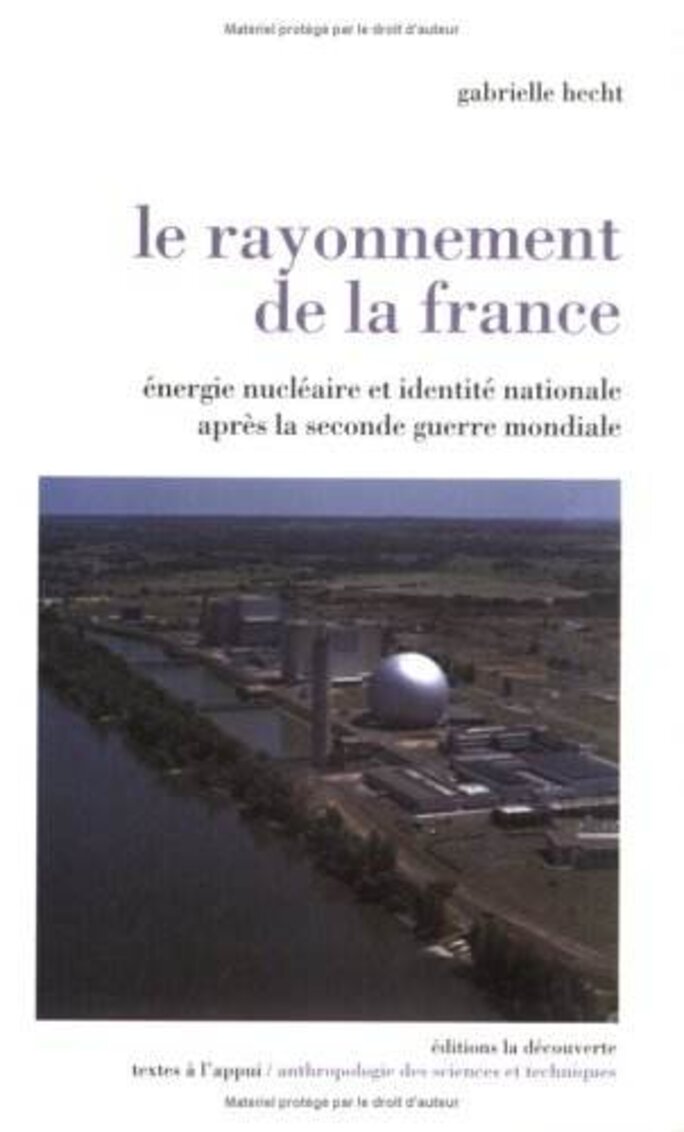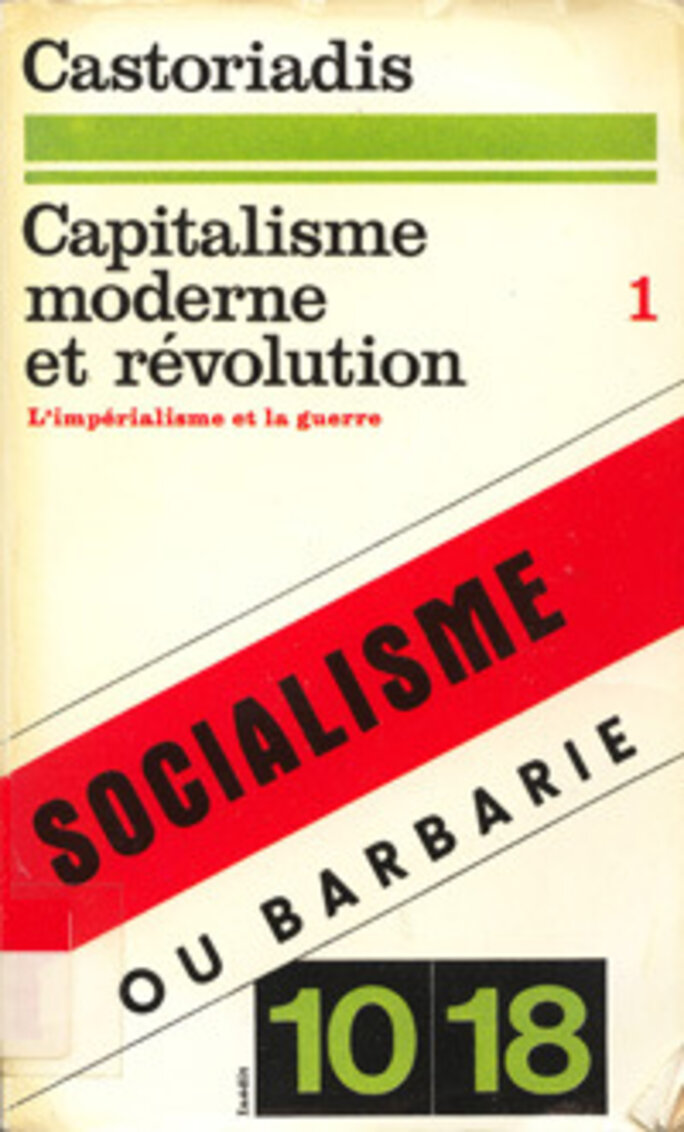The timing couldn't be more apt. Just as Arnaud Montebourg, the minister for industrial renewal, announced with fanfare a drive to re-industrialise France anchored firmly in the country's tradition of dirigisme, a newly-published book sheds a critical light on Les Trente Glorieuses, the 30 'glorious' years of post-war prosperity often cited as a prime example of the success of French centralised economic planning.
A video made for the mid-September announcement by President François Hollande's office (see above) illustrates how closely the initiative follows Charles de Gaulle's vision for France, using the symbols of engineers, nuclear power, laboratories, motorways and the elite Ponts et Chaussées school for civil engineers, the driving forces of France's modernisation from 1946 to 1975.

Enlargement : Illustration 2

But the book, Une Autre Histoire des 'Trente Glorieuses'. Modernisation, Contestations et Pollutions dans la France d’Après-Guerre (An Alternative History of the Thirty Glorious Years – Modernisation, Protest and Pollution in Post-War France), a collection of essays edited by Céline Pessis, Sezin Topçu and Christophe Bonneuil and published by Éditions La Découverte (see right), lays bare the too-convenient truths and political manipulations of that mythical epoque and offers up some different interpretations.
Les Trente Glorieuses - meaning Thirty Glorious Years - is both an historical period and an ideological invention. The term was first coined by economist Jean Fourastié in 1979, just after the end of a cycle of strong economic growth that had lasted practically 30 years. The name consciously carries echoes of the Trois Glorieuses, the three-day revolution in July 1830. For Fourastié, this allusion is justified by the “invisible revolution of 1946 to 1975” that took place in French society, one he saw as a profound, silent and beneficial process.

Fourastié, whose books have sold hundreds of thousands of copies, was one of a group of experts running the bodies set up to oversee the French economy and implement its modernisation, the Commissariat géneral du Plan and the Service des Etudes Economiques et Financières (S.E.E.F). Their bywords were productivity, growth, expansion, forecasting and planning, and their credo was actively promoted at the prestigious social science institute Sciences Po, and the Ecole National d’Administration or ENA, the training ground for top-level civil servants, as well as being broadcast to the public via the press and “popular publications”.
Fourastié believed it was vital to break with archaic attitudes and methods, in particular rural ones, and went as far as caricaturing France as a backward country that needed to “throw off the larva stage” and “the traditional vegetative life”.
This alternative history of the Thirty Glorious Years is not merely a re-writing of the conventional history – even if the authors do say the period could just as well have been called the “Thirty Destructive Years” or the “Thirty Dangerous Years”. Its essays not only seek to unravel the myth by showing the dark side of economic growth and modernisation at any price, they also reveal how numerous critical voices were reduced to silence.
The essays do not spell out what an alternative model of development to the existing one they describe as unsustainable might look like. But they do give substance to and bring up to date the question of whether the very notion of progress must be renounced, or whether it is enough to simply limit the damage it causes and lie back and enjoy its benefits.
The book thus strips away the contemporary illusion that the current generation was the first to develop concerns about the environment, even though the methods of production and consumption during the Trente Glorieuses had an impact, and for the most part quite consciously, on both natural resources and the way people live. In doing so the authors suggest correcting false notions which continually surface in the media, in school textbooks or even in everyday language about sustainable or unsustainable technological innovation and development.

Indeed, the authors begin by challenging the very time frame used for the Trente Glorieuses. France's first five-year plan was symbolically launched in 1946, an opportunity to mark the end of the war-time collaborationist Vichy regime. The authors describe how there was “among some modernisers an obvious concern to get rid of career continuity, to disguise functions held under Vichy by various key figures of the post-war period, or to exorcise Petainist France by inventing a modern France, sole heir of the free France that had resisted Nazism”. Yet, at the time, strong links remained between the technocratic face of Vichy and post-war modernisation policies, particularly in agricultural and plant technology.
The authors do not deny or discredit the major changes in France over two or three decades, but they demonstrate that the country's metamorphosis was in fact partial. “French society did not go into this 'modernisation' with its eyes closed”, nor was it necessarily wholly in accord with the “frenetic modernisation of the 1960s rock and roll generation”, say the authors. “And the idea of progress that was implicit in this change was not necessarily accepted and shared by all,” they add.
Critics dismissed as 'medieval'
Four themes emerge in the book. The first is the need to maintain a proper analytical distance when discussing France's dash towards modernisation. “Despite automation, or sometimes because of it, workers' bodies have to endure intense and repetitive labour, and this wears people out and exposes them to new risks,” the authors say.
The writers reflect how conceptions and stories of the period have been influenced by an intellectual construct of progress created “during a period of rebuilding notable for a debate on national decline and the notion of the need for urgent action and mobilisation inherited from the war.” The elites behind this construct, they say, gave themselves the goal of forging a new national mystique.

An example of this construct is the way descriptions of the Industrial Revolution, which had previously centred on its social ills, “now embrace a triumphant optimism, and the Industrial Revolution becomes the matrix for reflection and evaluation of the march of modernity”.
But this construct overlooks the large extent to which French industrial pride was based on mining in its former colonies. American historian Gabrielle Hecht demonstrates in the book, for example, how the development of the civil nuclear industry could not have taken place without the colonies and ex-colonies.
In fact, foreign historians were often the first to question the glorious nature of France's post-war period, rather than French researchers whose own education had steeped them in the infallible wisdom of modernisation. The American Robert L. Frost, for example, in a detailed 1985 study of how the French Alpine village of Tignes was flooded to make way for a hydro-electric dam, analysed the tensions and compromises between unions and bosses, the way France's energy future was constructed in the national interest “and the way this technocratic credo would declare a sort of cultural war on another France”.
The second theme is a plea to include the consequences of the model of development adopted after 1945 in historical accounts of the period. The history of France's economic lift-off includes “a change in the scale of French people's contribution to the human imprint on the planet, and the beginning of an unsustainable model of development with direct and long-term effects caused by technical and economical choices that are difficult to reverse”, the authors say.
So in the context of the nuclear industry, for example, they identify “the tension and collision between the short historical timescale of three decades, the slower and less glorious timescale of the deterioration of African miners' bodies, and the long timescale of the biosphere and the atmosphere”. However, they say this analysis does not imply the need to substitute progressive views with backward-looking ones.

That leads to a third theme, which is about giving voice to the warnings made about the damage wreaked by progress, and the “controversy and conflicts” that existed around the subject of modernisation. Contrary to popular belief, according to which this kind of dissent only dates from after the events of May 1968 in France, “numerous and prestigious voices were raised denouncing the inhuman facets of 'progress' and highlighting the environment as an urgent worldwide problem”.
This is one of the most interesting parts of the book, in particular because it shows how a now-forgotten intellectual grouping formed. The polarised political and intellectual confrontations of the Cold War period (1) drowned out the perspective of people such as German-American political theorist Hannah Arendt, who characterised the waste economy as one “in which things must be almost as quickly devoured and discarded as they have appeared in the world, if the process itself is not to come to a sudden catastrophic end” (The Human Condition, 1958).
This point of view was also espoused by Christian intellectuals such as Bernard Charbonneau, Jacques Ellul, Gabriel Marcel, or Paul Ricoeur and by anti-Stalinists involved in the review Socialisme ou Barbarie (see above left). This diverse group of philosophers, who were marginalised during the Cold War, refused to choose between capitalism and communism. This refusal, the book explains, was an integral part of the anti-productivism strand of political environmentalism.
We discover that those who gave voice, well before 1968, to the 'Complaint against Progress' ('Complainte du Progrès') of jazz singer Boris Vian's 1956 song, criticising the way of life, production and consumption being imposed on post-war France, were far from being a handful of isolated dissident thinkers.
The book also discusses the mobilisation of farmers at Saclay, south-west of Paris, who unsuccessfully opposed the building of an atomic research centre there from 1947, the inhabitants of Calvi who rejected plans for an underground atomic testing centre in Corsica, the teachers of the Association de Protection Contre les Rayonnements Ionisants, and protests by fishermen against river pollution.
A particularly interesting essay discusses the beginnings of environmental concerns in the trade union movement and shows that some sectors of the CGT, then a Communist-affiliated trade union confederation, were much less inclined to be whole-hearted supporters of boosting production and were more reticent about the benefits of progress from technical innovation than they were after 1968.

But, and this is the fourth theme of the book, most of these alternative views were silenced by what the authors call the “management” of criticism of modernisation. This was achieved in several ways. One was the creation of “areas of reciprocal interest between government modernisers, the employers and unions in view of creating a 'convergence' across class antagonisms”, of which regular 'fact-finding missions' – workers and bosses going abroad to see how the workplace was organised elsewhere - were an example.
Another way of neutralising potential opposition, they say, was to limit debates to matters of scientific expertise, which had the effect of de-legitimising any contrary opinions that were not based on measurements and figures. An example of this was how measurements of river pollution carried out by experts were used to demoralise opponents. In addition, anyone who disagreed was dismissed as immature, ignorant, stuck in their ways, medieval or even hailing from the Stone Age.
So by seeking to take an historical glimpse beyond the “modernising movement” notion of this period, this book has managed to rehabilitate views that have long been dismissed as archaic, or even as a desire to return to the days of Vichy. As early as 1962 author René Barjavel wrote: “If your generation does not immediately become aware of the dangers, all is lost [...] The air will rot. Green spaces will rapidly shrink. Renewal of oxygen will decline and combustions of all sort, doubled or tripled in the space of 20 years, will tend to replace it more and more quickly with carbonic acid and all kinds of corrosive waste.”
But this alternative history is above all a call to abandon a 'productivist' way of thinking that is still prevalent today. For despite a few wind farms generating electricity here and there, 'productivism' – the belief in ever more production and economic growth - still overwhelmingly colours the vision of industrial conquest emanating from the current socialist government and presidency.
--------------------------------------------
1. The French Communist Party held strong allegiance to Moscow and had a wide base of popular trade union and electoral support during the post-war period.
-----------------------------------------
English version by Sue Landau
Editing by Michael Streeter


